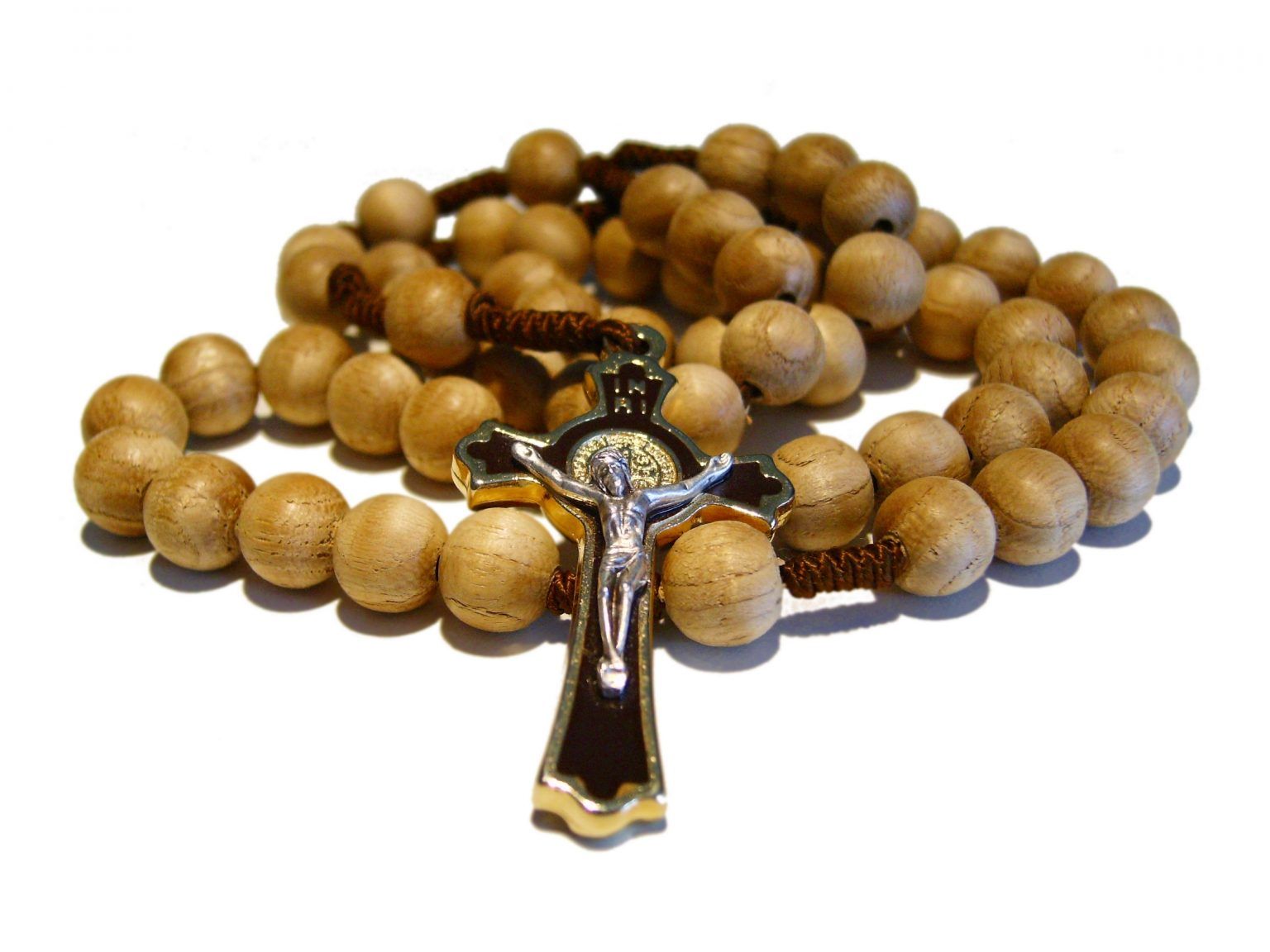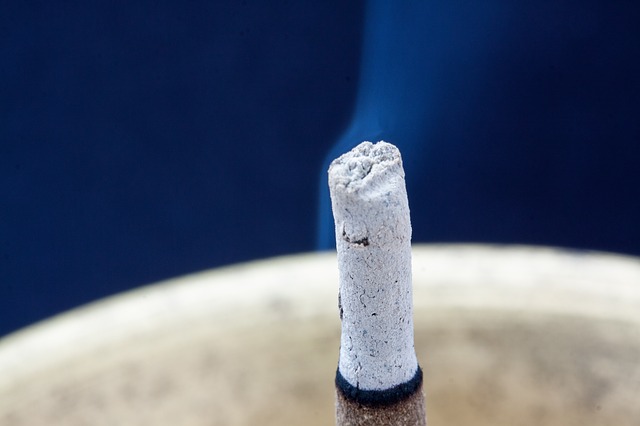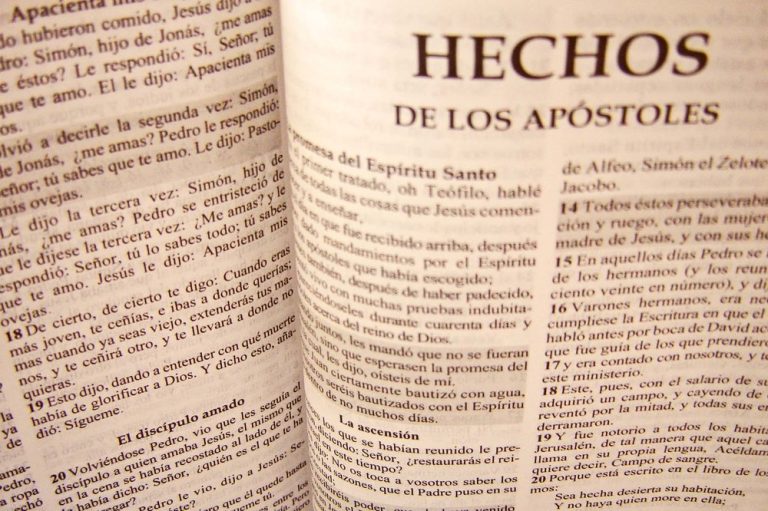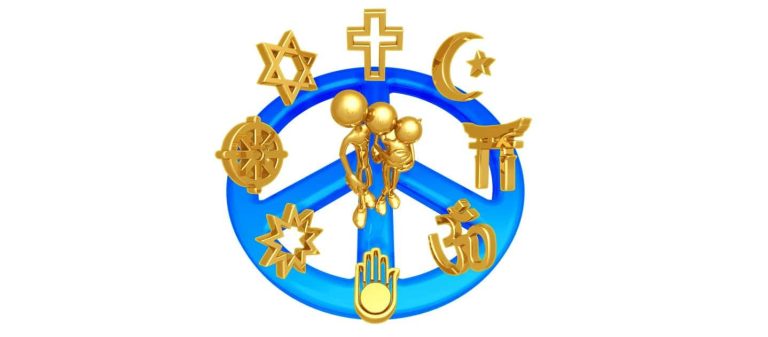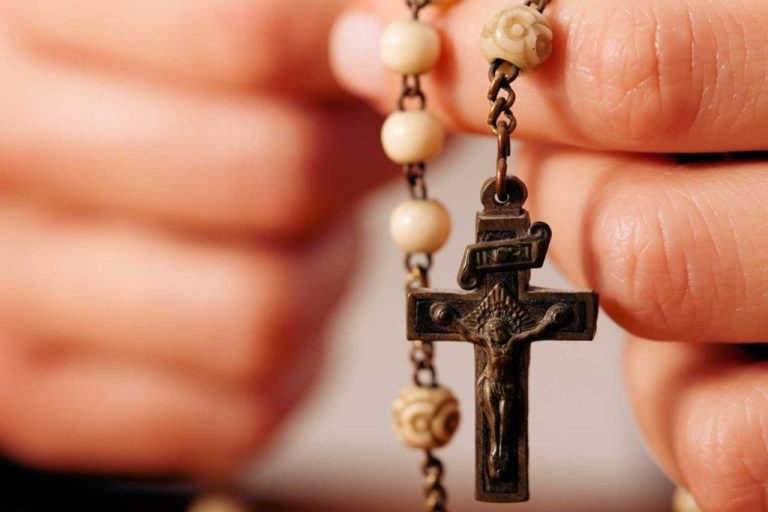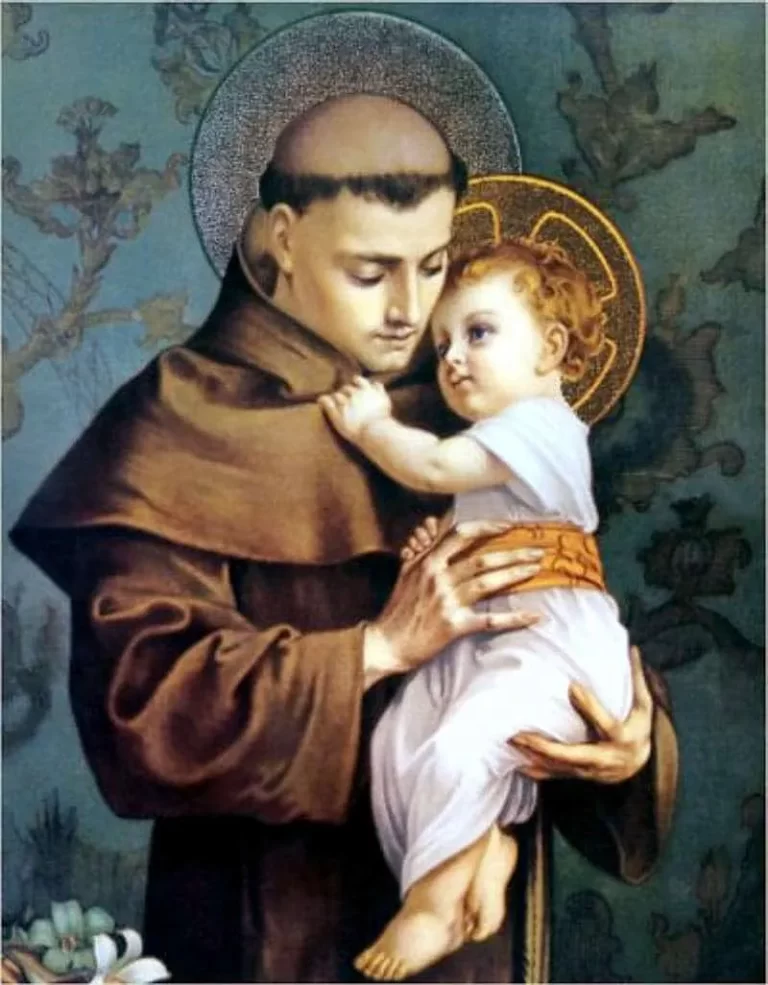The History and How Did the Holy Catholic Rosary Emerge?
The Holy Rosary, becomes a type of prayer that has a very ancient origin or provenance, made in order to be able to establish in the year that the prayers of the Mysteries of the Holy Rosary were made. In the following article we will know everything about how to perform this type of prayer and what it consists of if you still do not know.
Rosary (Catholicism)
The Rosary from the medieval Latin language of “rosarium”, and this from the Latin “rosarium” rosaleda, becomes a type of traditional Catholic prayer that commemorates the 20 “mysteries” (about 15 in the traditional way) of the life of our beloved Lord Jesus Christ and the Virgin Mary, which are recited after announcing each of them by an Our Father, then 10 Hail Marys and 1 Glory to the Father.
It becomes frequently designated as a Holy Rosary by all Catholics. “The Church has come to recognize at all times a particular kind of efficacy to the Rosary, for which she has come to entrust to it, through its community recitation and also the constant practice of it, the most difficult causes.”
Likewise, the string of beads used to pray the rosary is called “rosary”. The beads are separated for every 10 by others of different sizes and the string is attached at its 2 ends to a cross.
Beginnings of the Rosary
In the origins or the History of the Holy Catholic Rosary, the ancient traditions of prayer from the East and also from the Christian West are intertwined. The rosary has its roots in the ninth century, when the way to honor Mary, who is the mother of Jesus in the East, began to be known in the Western regions.
It is about the repetition of the acclamations and also of the praises that are presented in the Gospel of Luke (this is the greeting of the angel Gabriel to the virgin Mary in the book of Luke 1:26-28; and also the greeting of his Elizabeth’s cousin to Mary in the book of Luke 1:42) until being able to form the Hail Mary along with a rich complement of hymns and various prayers typical of Eastern liturgies.
Among the various influences of greater importance is the translation into Latin of the Akáthistos to the own mother of God, a type of hymn from the Greek Eastern liturgy of the late sixth century that comes to meditate on the mystery of the divine motherhood of God. the Virgin Mary.
A man named André Duval was the one who quoted Thomas Esser, who referred to the existence of a manuscript from the year 1501 which was preserved in the Munich library, in which it is highlighted that the rosary had its main origin firstly in the Order of San Benito, and that was later consolidated by the Order of the Carthusians, and was expanded by the action of the Dominicans.
rosary crown
The so-called rosary crown or also known as the camándula, as it is usually known in certain countries of the world, is made up of about 50 accounts in groups of 10 which are known as the “tens”, with an account that is much thicker between each decade, or a bead that is slightly further apart from the Hail Marys. The string is closed at both ends, hooking them in a simple way, or to an intersection plate.
The plate usually has a triangular or similar shape, with the vertex downwards, from which, usually, however, not always, especially in the case of old rosaries, a section of commonly about 5 beads comes out, being something much older than the extreme ones, like those of the Our Fathers. From the last one comes out a kind of link from which hangs a Crucifix, or a cross.
Mysteries of the Holy Rosary
Each series of mysteries comes to include about 5 different themes for what meditation is, each of which comes to represent a moment in the life of the Lord Jesus and the Virgin Mary, the mother of Jesus. The rosary is the one that represents the roses, as a prayer that are usually offered to the Virgin Mary, in the different stages of her life as the mysteries.
Traditionally, the rosary was dedicated to one of the 3 series of “mysteries” that had to be recited sequentially, 1 for each night. According to that current praxis, Monday and Thursday were dedicated to the “Joyful Mysteries” , Tuesday and Friday to the “Sorrowful Mysteries” , Wednesday, Saturday and Sunday to the “Glorious Mysteries” . ”. 7
So that it can be said that the Rosary is usually more fully “a compendium of the Gospel”, it is appropriate that, after having remembered the incarnation and also the hidden life of Christ (which are the mysteries of joy), and before reaching By considering the sufferings of the Passion (which are the mysteries of pain) and also the triumph of the Resurrection (which are the mysteries of glory), meditation comes to focus in the same way on certain particularly significant moments of public life (which correspond to the mysteries of light).
This kind of incorporation of the new mysteries, without prejudging any kind of essential aspect of the traditional structure of this kind of prayer, leads to having to make it live with a renewed interest in Christian spirituality, as a true introduction to the depth of what is the Heart of Christ, the abyss of joy and also of light, pain and glory.
Traditionalist Catholics even decided not to incorporate this kind of new way of praying the rosary, always keeping the 150 Hail Marys with the 15 mysteries.
- The Joyful Mysteries: On Mondays and Thursdays, and also in the season of Advent and Christmas (Monday and Saturday).
- The Sorrowful Mysteries: On Tuesday and Friday, and during Lent (Tuesday and Friday).
- Luminous Mysteries: On Thursdays.
- Glorious Mysteries: On Sunday, Wednesday and Saturday, and at Easter time (Sunday and Wednesday).
prayer forms
While the crucifix is held, the sign of the cross is made and then the so-called Act of Contrition is recited. On the first large account you get to recite 1 Our Father. On each of the following 3 beads, which are small, 1 Hail Mary is recited. 1 glory is recited before the next count which is large. Then the first mystery of the rosary for that day is announced and 1 Our Father is recited. In each of the following 10 small beads, which is known as 1 decade, 1 Hail Mary is recited while reflecting on the mystery.
Subsequently, 1 Gloria is recited after 10 Hail Marys. You can also get to pray the Fatima prayer. Each of the following decades is recited in the same way: announcing the corresponding mystery, then reciting 1 Our Father, 10 Hail Marys and 1 Glory be while meditating on the mystery.
When the 5th mystery has been concluded, the rosary usually ends with the prayer of the Litany and the Hail Queen. There are also different ways of praying it that vary according to the way of meditation, the prayers that are added when praying it and even the motivation of the prayer itself.
The Fifteen Promises of the Virgin Mary
The 15 promises that the Lady of the Rosary came to give according to the writings of Blessed Alano are the following:
- Whoever gets to constantly pray the Rosary will receive any kind of grace that is asked of him.
- She promises her special protection and a great number of benefits to those who come to devoutly pray her Rosary.
- The Rosary becomes the shield against hell, which destroys vice, also frees sins and also brings down heresies.
- The Rosary is what makes human virtues germinate so that souls can achieve divine mercy.
- In the hearts of all men, the love of the world with the love of God and also raises them to desire heavenly and eternal things.
- The soul that comes to commend itself for the Rosary will not perish.
- He who prays the Rosary with great devotion, considering its sacred mysteries, will not be oppressed by misfortune, nor will he die an unfortunate death, rather he will convert if he is a sinner, who will persevere in grace if he is just and, in every case will come to be admitted to eternal life.
- The true devotees of this Rosary will not die without the Sacraments.
- All those who come to pray the Rosary will have the light in life and also in death and in the same way the fullness of grace and they will all be participants in the blessed merits.
- All souls devoted to the Rosary will soon be freed from Purgatory.
- The children of the Rosary will enjoy a great singular glory in heaven.
- Everything that is asked for through the Rosary will be achieved quickly.
- Those who spread the Rosary will be helped in all their needs.
- The Lord Jesus has been asked for the grace for all the brothers and devotees to have in life and also in death like the brothers all the blessed of the heavenly court.
- Those who come to pray the Rosary all become her beloved children and the brothers of the beloved Lord Only Begotten Jesus.
- Devotion to the Holy Rosary becomes a manifest sign of the predestination of glory.
The Rosary and the Mendicant Orders
In the fourteenth century the mendicant orders that were issued by the Franciscans, the Dominicans, the Carmelites and also the Augustinians, which were founded, together with their female branches, in the first half of the thirteenth century, will spread the prayer of the Psalter of Mary in their preaching and also among the laity that they came to accompany spiritually.
The Brotherhoods of the Rosary
In the year 1470 the Dominican named fr. Alain de la Roche or Alano de Rupe (born in the year 1428 and died in the year 1475), founded in the Douai region (which is a city in the north of France, which is close to the Rhenish area) the so-called Brotherhood of the Psalter of the Glorious Virgin Mary.
The main objectives came to be: having to spread devotion to the Rosary, creating a type of environment of Marian spirituality among each one of his brothers and also having to ask for the intercession of the Virgin. Well, being inspired by Alain de la Roche, the prior of the Dominicans of Cologne (which is the city located in the Rhenish area) came to create the first Brotherhood of the Rosary in 1475.
It became so successful among the faithful people and also the civil and ecclesiastical authorities, that quickly various Brotherhoods of the Rosary began to be founded in many other Dominican convents, coming to pass under the responsibility of the General Curia of the Order. of Preachers (of Rome) in the year 1485. From that moment on, the Dominicans will be the great diffusers of the Rosary, although in the same way many of the other religious, in addition to the laity and various priests, did so.
Four Factors
There are about 4 factors that came to contribute to the success of said prayer, which are the following:
- It is a very simple sentence
- You can pray individually or even as a community.
- It even encourages people to meditate on the Gospels
- It helps to correctly ask for what we need.
Thanks to the latter, the Church usually believes that praying the Rosary was what contributed to the occurrence of many miraculous actions, such as healings, conversions, the liberation of besieged cities or the appeasement of various natural phenomena such as earthquakes, storms, volcanic eruptions or even tsunamis.
Trying to integrate the prayer of the Rosary into Dominican spirituality, at that time Saint Dominic began to be identified with the Rosary. And, after some time, the well-known tradition arose that the Virgin Mary was the one who gave this saint a type of rosary, always asking him to spread this kind of prayer throughout the entire world; She came to consider Santo Domingo in this way as the founder of the Rosary.
Saint Pius V and the Rosary
During the 16th century there came to be a great event of great importance: the victory at the Battle of Lepanto (in the year 1571), in which the Christian army managed to defeat the Turkish army, which was much superior to it. The key can be found in the fact that Pope Saint Pius V (from the year 1504-1572) asked all the Christian faithful to come and pray the Rosary so that Mary would intercede.
As a consequence of all this victory, in the year 1573 Pope Gregory XIII (from the year 1502-1585) was the one who instituted the feast of the Virgin of the Rosary on the first Sunday of October. Then this party was passed to October 7, which is remembered as the day of the battle of Lepanto.
In addition, Saint Pius V was the man who established the way to pray the Rosary. This one will consist of about 3 groups of 5 mysteries. The first become the joyous ones who are the ones who invite people to meditate on the most important passages of the childhood of the Lord Jesus. Then there are the sorrowful mysteries, which deal with the passion of our Lord. And finally there are the glorious mysteries, in which people come to meditate on the Lord’s resurrection and other subsequent events.
In each of the mysteries, 1 Our Father, 10 Hail Marys and 1 Glory Be are prayed while the person then meditates on a passage referring to the life of the Lord Jesus or the Virgin Mary.
The Perpetual Rosary
In the course of the 17th and 18th centuries, the recitation of the Rosary became widely spread among the faithful people of Catholic believers. In the year 1629 the Dominican friar named Timoteo Ricci (from the years 1579-1643) was the one who created the Perpetual Rosary. For this, he distributed some 8,760 cards (corresponding to the 8,760 hours in 1 solar year), so that at each hour of the year there would be someone who was praying the 15 mysteries of the Rosary.
This became so popular that in certain cities different groups of cards had to be distributed, because the applicants already far exceeded the number of 8,760. With the support of some of the Popes, the Perpetual Rosary was spread throughout all the regions of Europe and the mission lands.
After the French Revolution (in the year 1789) and the following liberal revolutions that took place during the 19th century, the Church suffered a cataclysm: it lost its public influence, all its possessions were taken from it and, above all, they tried to reach to displace it as a moral reference in society.
Values as evangelical as freedom, fraternity and equality came to be assumed by the revolutionaries, and Marxism was the one that accused the Church of being the “opium of the people”. As a consequence of this type of anticlerical environment, the religious Orders were expelled at all times and many obstacles were placed on all the priests.
Living Rosary
Faced with this kind of situation, the faithful people came to find their spiritual refuge in the various devotions. One of the main ones became the prayer of the Rosary. The young laywoman named Paulina Jaricot (from the year 1799-1862), taking as her main reference the Perpetual Rosary that was barely being prayed because it was a bit out of date, she devised what the Living Rosary is, thinking above all of the people in the class worker.
This consisted of creating groups of 15 people in which each one would commit to praying at least 1 mystery of the Rosary a day. In this way, each group prayed 1 full Rosary a day.
Another objective of the so-called Living Rosary was to come to support both spiritually and financially the missions, being the forerunner of the many Pontifical Mission Societies. This type of prayer was able to spread rapidly throughout all the regions of Europe, and all the Dominicans were very involved in its dissemination. It is not strange that in 2 apparitions of the Virgin the Rosary becomes a central element:
- In the regions of Lourdes (in the year 1858) the Virgin expressly asks him to pray the Rosary.
- In the regions of Fatima (in the year 1917) the Virgin herself calls herself “Our Lady of the Rosary”.
Rosario Teams
In what is the Second Vatican Council (1962-1965) the Church overcomes the Tridentine mentality and for that reason opens up to contemporary society, leading to profound spiritual changes. As a result, in 1967 the Teams of the Rosary were created on the initiative of the French Dominican Friar Marie-Bertrand Eyquem.
This type of movement is the one that has a strong apostolic and also ecumenical character. The teams are made up of about 15 people, in which non-Catholics are admitted in the same way. In addition to committing each of the members to pray 1 mystery of the Rosary a day (as was already done with the Living Rosary), they meet at least once a month in the house of one of the members to be able to pray in common, always inviting other people to participate.
Luminous Mysteries
And so we come to the 21st century. Society itself is changing so much that the Church has to modernize the Marian cult in order to make it accessible to people today. In this same sense, Pope Saint John Paul II (pope between the years 1920 to 2005) in addition to promoting the prayer of the Rosary a lot, was the one who introduced about 5 new mysteries that are:
- The Luminous, which deal with the public life of our beloved Lord Jesus.
However, there is still much to be done to be able to spread this very important prayer in society, especially among the youngest. Should it be explained better?: Without a doubt. Is it necessary to introduce certain types of changes in it? Probably, however, with much more care, as the saying goes, the remedy is not going to be worse than the disease… Let us pray to Mary to enlighten us.
Santo Domingo de Guzman
The Mother of God, in one of her apparitions to Santo Domingo, taught him to pray the rosary, in the year 1208. Therefore, she told him to spread this kind of devotion and use it as a kind of powerful weapon against all the enemies of the Faith.
This man named Domingo de Guzmán became a holy Spanish priest who went to the south of France in order to convert those who had fallen away from the Church because of the Albingense heresy.
This comes to teach that there are about 2 gods, one of good and the other of evil. The good one was the one who created everything spiritual. The bad guy was the one who created everything material. As a consequence, for the Albingenses, everything material became bad. The body is material; therefore, the body becomes bad. The Lord Jesus had a body, therefore, Jesus is not God. This is what he came to teach in those regions, which is why many called it a kind of heresy.
The Virgin asks Santo Domingo to help her spread the Devotion
The Virgin appeared to him in the chapel. She even held a rosary in her hand and she taught this man named Domingo how to recite it. She said that she had to preach it throughout the world, promising that many of the sinners would be converted and that way they would obtain abundant graces. So this is known as the Santo Rosario Domingo .
This priest named Domingo left that place full of zeal, rosary in hand. Indeed, he came to preach it, and with great success because many of the Albingenses returned to the Catholic faith.
Unfortunately, the situation between the albingences and the Christians was also linked to what was politics, which was what caused the thing to come to war. Simón de Montfort, who was the leader of the Christian army and in turn a friend of Domingo, was the one who made him teach all the troops to pray the rosary.
So they prayed it with great devotion before beginning their most important battle in the Muret areas. De Montfort came to regard his victory as a true miracle, and it was also the result of the rosary. As a kind of sign of gratitude, De Montfort built the first chapel to Our Lady of the Rosary in those regions.
The promises of the Virgin Mary to those who devoutly pray the Holy Rosary
An increasing number of men joined Dominic’s apostolic work and, with the approval of the Holy Father himself, Dominic came to inform the Order of Preachers (better known as the Dominicans). With great zeal they preached, just as they taught, and all the fruits of conversion came to grow. As the order grew, they spread to the various nearby countries as missionaries to the glory of God and also of the Virgin.
The rosary came to be maintained as the favorite prayer over the course of almost 2 centuries. When the devotion began to wane, the Virgin presented herself to a man named Alano de la Rupe and told him that she had to revive the devotion. The Virgin told her in the same way that immense volumes would be needed to be able to record all the miracles that were achieved through the rosary and for which she reiterated the promises given to Santo Domingo regarding the rosary.
The Virgin of the Holy Rosary, Help of Christians!
In the regions of Europe and with it all Christianity was in serious danger of extinction. From what many know, from the promises of the Lord Jesus Christ, that this cannot happen, however, humanly speaking, there had been no solution to the threat of Islam.
The Muslims even proposed to make Christianity disappear, at the point of the blow of the sword. They had already come to take the Holy Land, in addition to Constantinople, the regions of Greece, Albania, North Africa and also Spain. In those same extensive regions, Christianity came to be persecuted, and many of the martyrs were the ones who shed their blood, many of the dioceses disappeared completely. After 700 years of struggle for the reconquest, Spain and Portugal were able to get rid of Muslim rule.
The Siege of Vienna
The Turks continued to be the powerful on land and, also in the following century, they invaded the regions of Europe from the East and, after taking huge territories, besieged Vienna, which is the capital of Austria. Once again, the enemy troops were far above them.
If they managed to conquer the city, the rest of the regions of Europe would fall for them. The emperor came to place his trust in him and also begged for the protection of Our Lady of the Rosary. There was an enormous battle and also a great bloodshed and already, when everything seemed lost, the relief managed to arrive on the day of the feast of the Holy Name of Mary, which was on September 12, in the year 1683, when the king of Poland, named Jan Sobieski, came to the rescue at the head of a Christian army, for which they defeated the Turkish armies.
The Battle of Temevar
The Turks came to suffer another great defeat at the hands of Prince Eugene of Savoy, who was the commander of all the Christian armies, in the Temesvar regions (in modern Romania), on August 5, 1716, in that same then it was the feast of the Lady of the Snows. Pope Clement XI even attributed this kind of victory to the devotion that was manifested to Our Lady of the Rosary. In thanksgiving, he even ordered that the feast of the Holy Rosary be celebrated by the universal Church.
The Pontiffs
Throughout many centuries, the various Popes of history have come to promote the pious devotion of praying the rosary and have also come to grant indulgences. For what Our Lord said: “Where 2 or 3 are gathered in my name, there am I in the midst of them” this is found in the book of Matthew 18:20.
The family rosary becomes a very wonderful thing said by many families. It becomes a very practical way of being able to strengthen the unity of family life. It is a kind of prayer that is available to everyone. The Popes, especially the most recent ones, have come to place great emphasis on the importance of the rosary in the family.
The so-called Dominican Pope, Saint Pius V (ordained between the years 1566 – 1572) was the one who commissioned his congregation to spread the holy rosary. Since then, the Popes have become great devotees of the rosary and also of its propagation.
All the Popes of the 20th century have been devout sons of the Holy Rosary
The highest authority of the Catholic Church, Pope John Paul II, insists on praying the Holy Rosary in the family, as well as in groups, even in private. He goes so far as to ask that everyone be invited to pray, not to fear what it means to share this beautiful devotion, which becomes a catechesis of the faith.
It fails to alert that the entire world is submerged in a crisis and that human strength is not enough to solve things. Victory, according to what the Pope says, will come again from the hand of the Virgin Mary. This is the victory of the Lord Jesus Christ, the Lord, the only King of the Universe.
Recommended by the Virgin in several of her most important Apparitions
The great importance of the rosary as a kind of effective means of believers has come to be confirmed not only by the various pontiffs, but also by the Mother herself, the Virgin Mary. This becomes the prayer of the simple and also of all the great ones, it is within the reach of everyone who wants to do it, at all times and in all places.
The rosary is one that honors God and also the Blessed Virgin in a very special way. In the Lourdes regions, the Virgin was carrying a rosary in her hand when she came to present herself to Saint Bernadette. And she also came to wear a rosary when she appeared to the 3 little shepherds of Fatima. And it was in the region of Fátima where she revealed her title to all her children: “Our Lady of the Rosary” .

Hello! Let me enthusiastically introduce myself as a dedicated blogger fueled by an intense passion for meticulously crafting insightful and well-researched blogs. My mission revolves around providing you, dear readers, with a veritable treasure trove of invaluable information.

